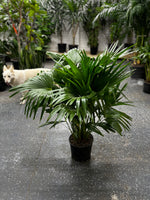
Fan Palm
$95.00 USD
Unit price perEstimated delivery between December 31 and January 02.
All sales of live plants are final; returns are not accepted.
Share
FEADTURED COLLECTIONS
Enhance your home with our collection of indoor plants, designed to purify the air and add a touch of natural beauty to any room. Easy to care for and perfect for any space.
Discover the elegance and beauty of our 'Orchids & Flowers' collection, featuring a curated selection of vibrant blooms that add a touch of nature's finest artistry to any space. From the exotic allure of orchids to the timeless charm of classic flowers, each plant is carefully chosen for its unique beauty and ability to bring life and color into your home. Perfect for plant lovers and decorators alike, this collection offers a range of options to suit every style and occasion.
Myrtle Topiary
From $28.00 USD
Unit price perBegonia Red Fred
From $45.00 USD
Unit price perMarantha Prayer Plant
From $18.00 USD
Unit price per



































